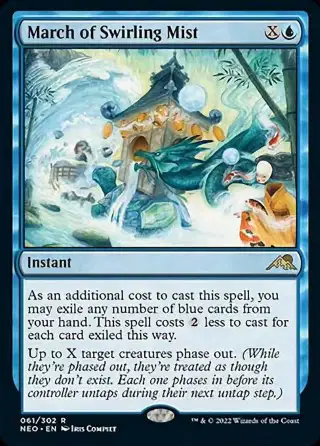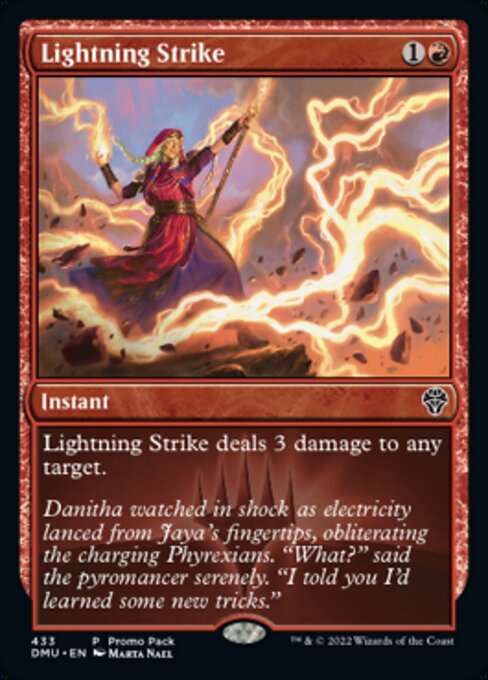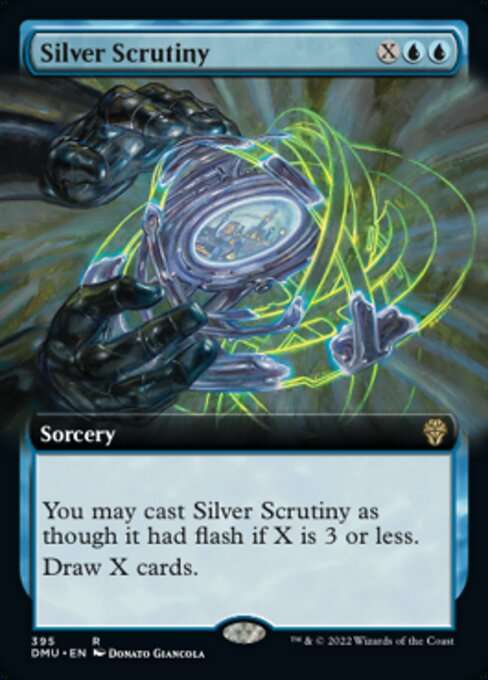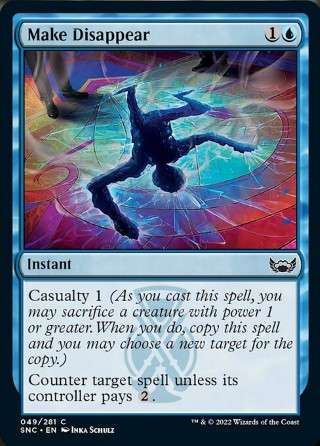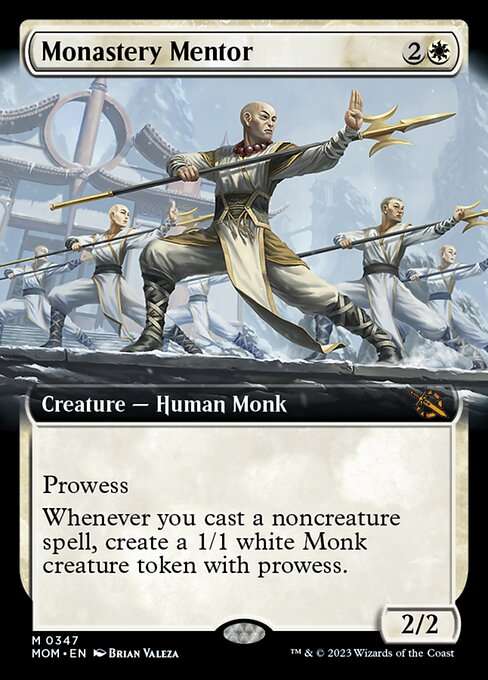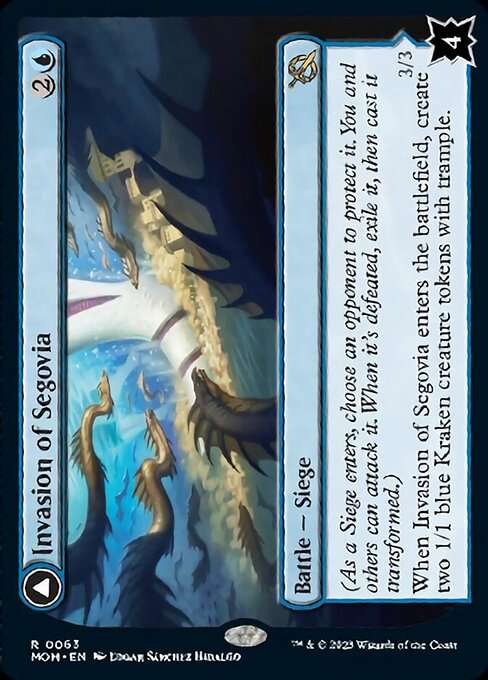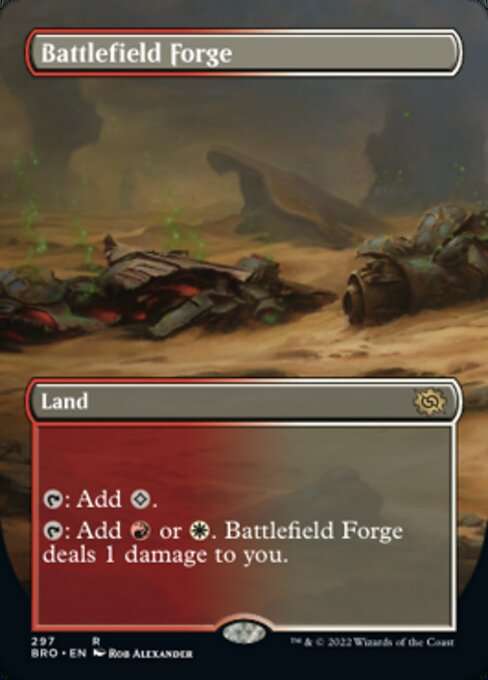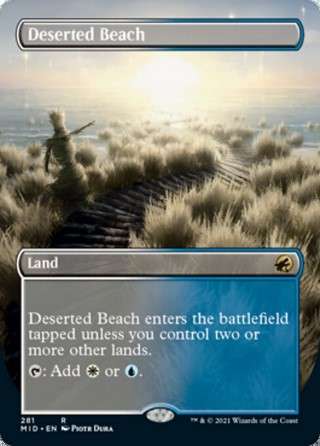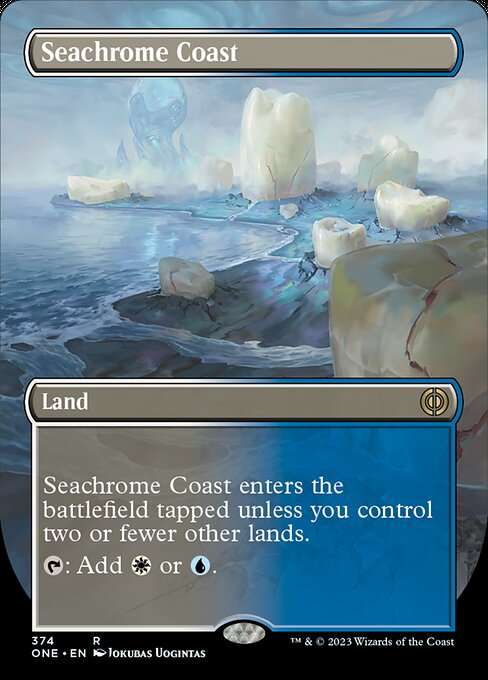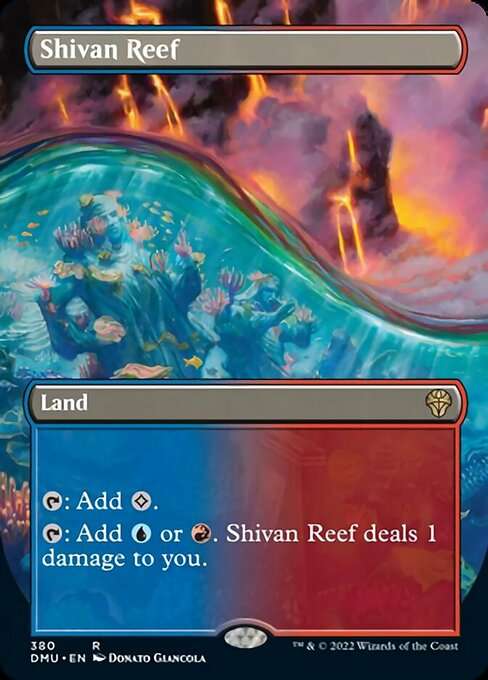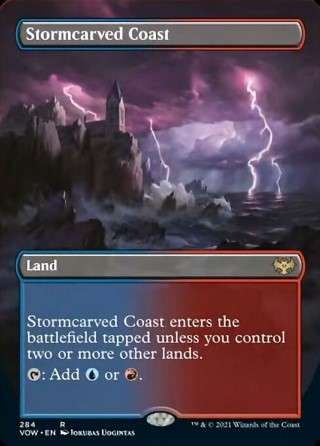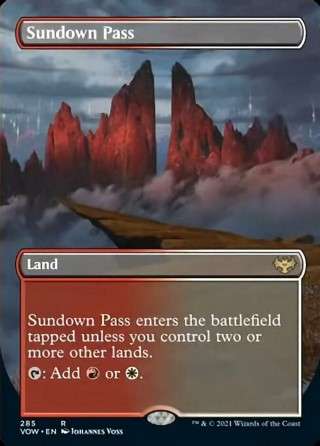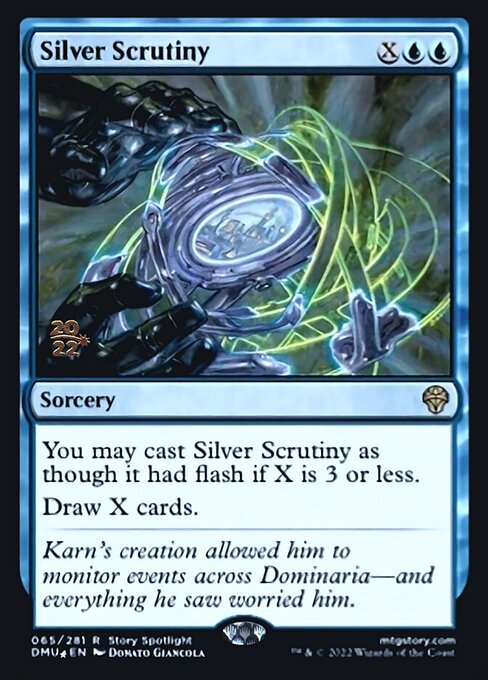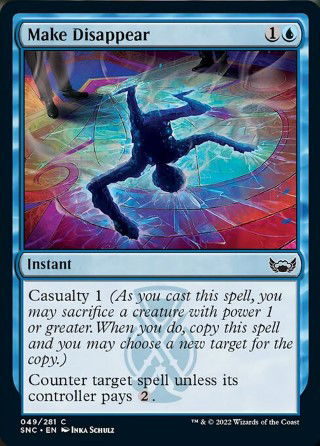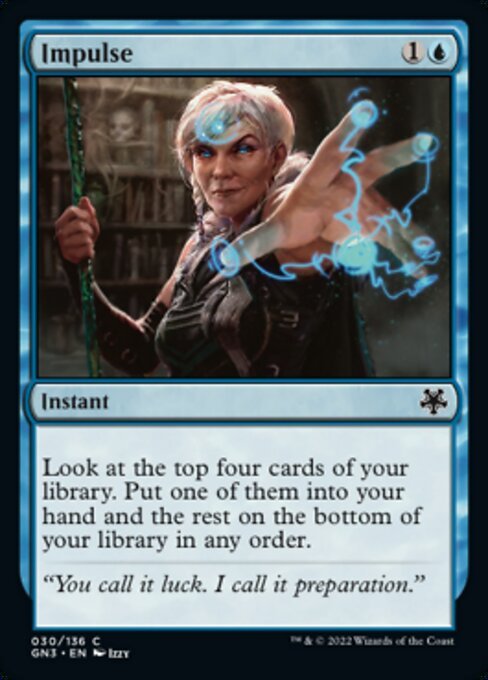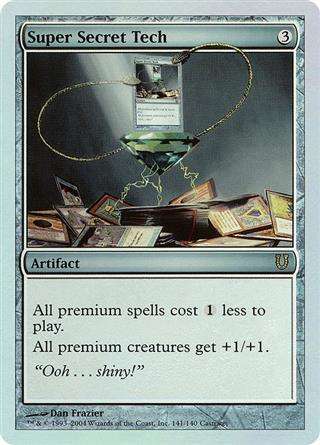Arena Standard - Jeskai Segovia STOMPS Meta Decks
- Deck contains 8 invalid cards for this format: Eiganjo, Seat of the Empire (NEO), Otawara, Soaring City (NEO), Sokenzan, Crucible of Defiance (NEO), Deserted Beach (MID), Stormcarved Coast (VOW), Sundown Pass (VOW), Make Disappear (SNC), March of Swirling Mist (NEO)
Main 60 cards (20 distinct)
| Other (11) | |||
|---|---|---|---|
| $2.59€3.181.95 | |||
| $1.82€1.720.02 | |||
| $1.00€0.660.02 | |||
| Creature (7) | |||
| $0.75€0.550.03 | |||
| $3.580.15 | |||
| Instant, Sorcery, Enchantment, Artifact (19) | |||
| $0.40 | |||
|
4
Impulse
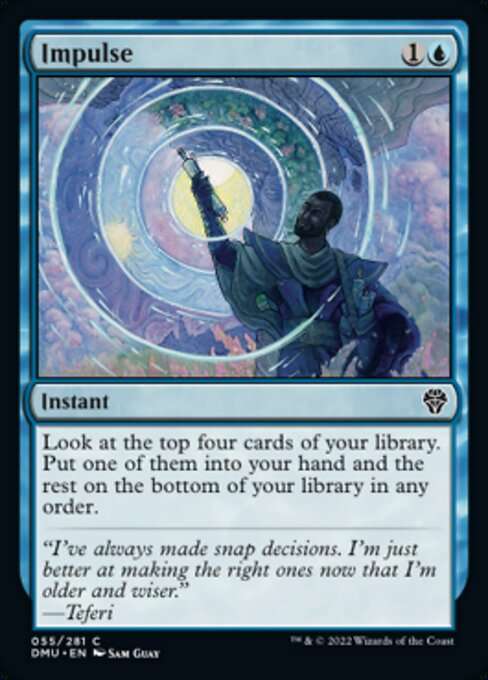
|
$0.20€0.110.02 | ||
| $0.26€0.260.03 | |||
| $0.20€0.280.01 | |||
| $1.77€2.910.08 | |||
| Land (23) | |||
| $7.15 | |||
| $15.54€18.444.24 | |||
| $2.25€4.041.58 | |||
| $4.17 | |||
| $3.120.09 | |||
| $2.23 | |||
| $5.86 | |||
| $2.80 | |||
| $7.00 | |||
(Simplified, true algorithm in MTGA not revealed by Wizards yet)
COMPARE WITH AETHERHUB COLLECTION
Add at least 100 different cards to your collection and set it as your Compare Collection on the manage page to see what cards from this deck you are missing.
COMPARE WITH MTG ARENA COLLECTION
Compare your MTG Arena Collection with AetherHub decklists or any other decks found on the web with the MTGA Assistant extension. Syncing your account will automatically upload your collection so you can see what cards you are missing right here.
Learn more Download For Windows
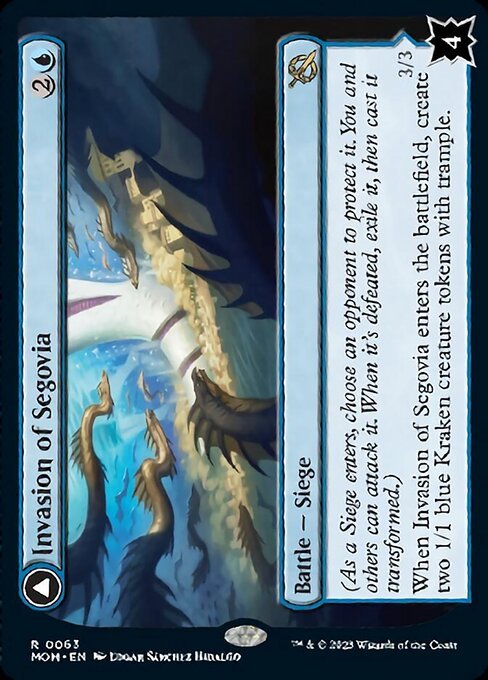

Invasion of Segovia is an awesomely powerful card when it flips into its Caetus side. However, it is one of those weird, synergetic cards which are only competitive if you can very consistently meet its condition (in this case flipping it) and you can very consistently get value out of it as soon as you do.
Getting Immediate Value
- Silver Scrutiny
 - You are very likely to be able to X:3 the Silver Scrutiny the same turn you've flipped Caetus, using up to 4 creatures you untap with Caetus plus Caetus itself (and/or perhaps any remaining mana you might still have up). You can hold this up on your opponent's turn, and if they target the Caetus with removal, you can use your creatures to cast Silver Scrutiny for 3 and draw 3 cards. If that's all you get out of Caetus, that's a good enough payoff for flipping it. If they don't target the Caetus, even better. Now you can choose to play the X:3 Scrutiny anyway to help with your next turn, or to untap with everything and play an enormous X:8 or X:10 Scrutiny at sorcery speed.
- You are very likely to be able to X:3 the Silver Scrutiny the same turn you've flipped Caetus, using up to 4 creatures you untap with Caetus plus Caetus itself (and/or perhaps any remaining mana you might still have up). You can hold this up on your opponent's turn, and if they target the Caetus with removal, you can use your creatures to cast Silver Scrutiny for 3 and draw 3 cards. If that's all you get out of Caetus, that's a good enough payoff for flipping it. If they don't target the Caetus, even better. Now you can choose to play the X:3 Scrutiny anyway to help with your next turn, or to untap with everything and play an enormous X:8 or X:10 Scrutiny at sorcery speed. - March of Swirling Mist
 - This card not only helps protect Caetus and your board (and thanks to convoke, you can phase out all or most of your creatures when hit with a wipe like Farewell
- This card not only helps protect Caetus and your board (and thanks to convoke, you can phase out all or most of your creatures when hit with a wipe like Farewell ), but importantly it also allows you to phase out all of your opponent's things. As a pure tempo play, you can essentially Time Walk
), but importantly it also allows you to phase out all of your opponent's things. As a pure tempo play, you can essentially Time Walk many decks and simply ignore their turn cycle, but it also means you get to attack on the next turn safely, and can be part of the equation for lethal.
many decks and simply ignore their turn cycle, but it also means you get to attack on the next turn safely, and can be part of the equation for lethal. - Make Disappear
 - This plays really well with a flipped Caetus because it allows you to protect it, basically for free. In this deck you are very likely to have a 1/1 token somewhere to sacrifice for the casualty cost as well. So now after flipping Caetues with a Make Disappear in hand you're either holding up protection, or you're holding up a counter for whatever they were planning on playing next.
- This plays really well with a flipped Caetus because it allows you to protect it, basically for free. In this deck you are very likely to have a 1/1 token somewhere to sacrifice for the casualty cost as well. So now after flipping Caetues with a Make Disappear in hand you're either holding up protection, or you're holding up a counter for whatever they were planning on playing next. - Impulse
 - Another great thing to do with Caetus. This can help you dig for something else to do with your convoke-able creatures, such as one of the three cards above.
- Another great thing to do with Caetus. This can help you dig for something else to do with your convoke-able creatures, such as one of the three cards above.
Mana Neutrality
One big thing you can do with a Caetus is to cast spells or trigger triggers which create additional creatures which can convoke additional spells - so that you're essentially casting spells for free. One way we do this is with Monastery Mentor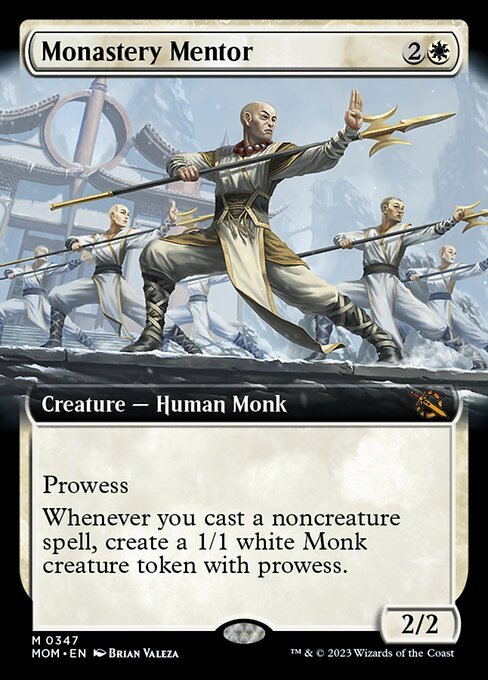 and Third Path Iconoclast
and Third Path Iconoclast![]() . With just two of these creatures down, you can now cast your glut of two drops for free. With two of them down, you can also cast an Invasion of New Phyrexia // Teferi Akosa of Zhalfir
. With just two of these creatures down, you can now cast your glut of two drops for free. With two of them down, you can also cast an Invasion of New Phyrexia // Teferi Akosa of Zhalfir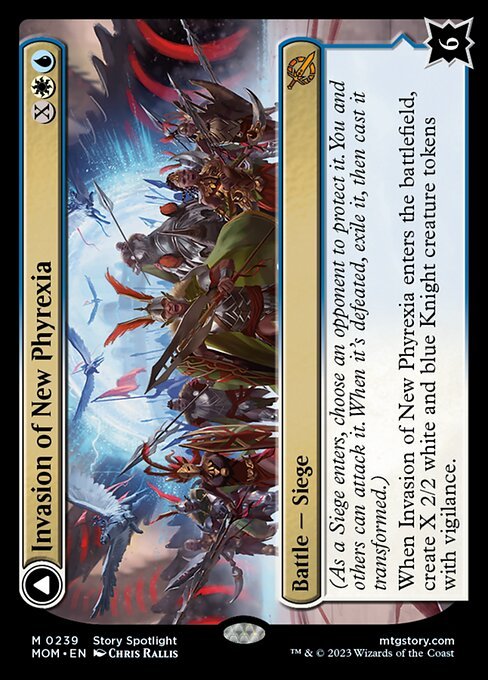 essentially for free since you will now create as many creatures as "mana" you spent to cast it. And with just one of them down, casting another Invasion of Segovia // Caetus, Sea Tyrant of Segovia
essentially for free since you will now create as many creatures as "mana" you spent to cast it. And with just one of them down, casting another Invasion of Segovia // Caetus, Sea Tyrant of Segovia makes itself free as well, by creating three tokens overall.
makes itself free as well, by creating three tokens overall.
It gets nuttier when you're able to essentially go mana positive by having even more of these token-generating creatures down.
Not Actually a Combo Deck
PSA that this is not actually a combo deck. Most people might look at this deck and say it's midrange. Personally, I think about it in a totally different way. But the important thing to know is that, although Caetus could be a very powerful combo piece, that's not how we're utilizing it here. It's difficult to win the turn that you play Caetus- or the turn after that, making this deck unusually prone to disruption if it were an actual combo deck. This is why we care about getting immediate, but non-game-winning value out of Caetus if it were to get removed, and the deck can still be very threatening without it: playing huge Invasion of New Phyrexia // Teferi Akosa of Zhalfir s, going wide and big with Monastery Mentor
s, going wide and big with Monastery Mentor , and doing a good enough job controlling the board that these creatures can pose a real threat on their own, at a normal curve.
, and doing a good enough job controlling the board that these creatures can pose a real threat on their own, at a normal curve.
This is a deck that is not centered around a particular combo, but is centered around maximizing synergies. Caetus is the most important synergy, but it's not the whole story. This is why we end up playing cards which are sometimes not quite as competitive as other options, but which have better synergy with the deck, and we are able to do so in large part thanks to the glut of card draw in the deck (which itself is an important synergy not only for paying off- and getting deeper with Caetus, but also for triggering things like Prowess and the token generating abilities of Monastery Mentor and Third Path Iconoclast
and Third Path Iconoclast![]() ).
).
What the Heck - Where is Fable?
Currently I'm not running Fable of the Mirror-Breaker // Reflection of Kiki-Jiki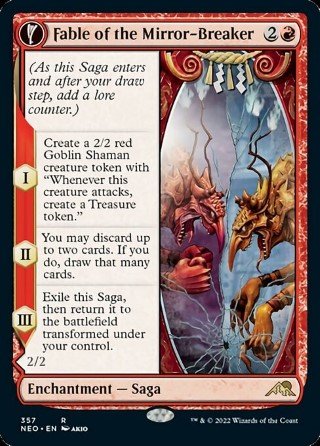 . This may be a mistake. However, I do think it's possible that it doesn't belong in this particular Invasion of Segovia-centric deck (although I think it makes more sense in other Segovia-centeric decks).
. This may be a mistake. However, I do think it's possible that it doesn't belong in this particular Invasion of Segovia-centric deck (although I think it makes more sense in other Segovia-centeric decks).
Here's my personal reasoning: Fable can play several roles in the deck, but in this particular deck, there are better cards for what we are needing to do. It does not do a better job than the card draw and card-filtering focused effects we have in our deck, because it's important that these types of cards do their thing right away so we can have huge Prowess turns, for example. Fable unfortunately can't play that role nearly as well as an otherwise generally inferior card like Bitter Reunion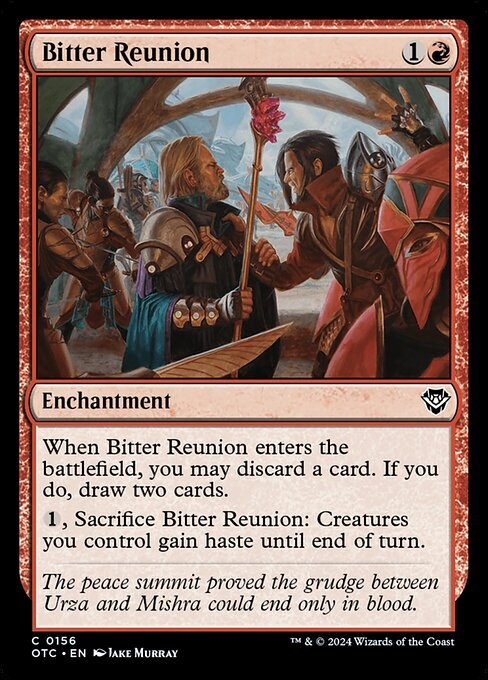 (which has additional utility in that it can also sacrifice to allow us to attack in right away with a bunch of new tokens, a common strategy in this deck for finding lethal). As a value engine- and as a midrange card Fable is pretty hard to top for the cost. But although this deck might look midrange (and I've flagged it that way here on Aetherhub because that's how a lot of people would categorize it) it actually has a fundamentally different strategy than a conventional midrange deck (if you want me to prosteletize to you about what I believe is a 6th core archetype of magic, DM me and I'll tell you all about it or refer you to some of my other videos about it).
(which has additional utility in that it can also sacrifice to allow us to attack in right away with a bunch of new tokens, a common strategy in this deck for finding lethal). As a value engine- and as a midrange card Fable is pretty hard to top for the cost. But although this deck might look midrange (and I've flagged it that way here on Aetherhub because that's how a lot of people would categorize it) it actually has a fundamentally different strategy than a conventional midrange deck (if you want me to prosteletize to you about what I believe is a 6th core archetype of magic, DM me and I'll tell you all about it or refer you to some of my other videos about it).
The most important thing to understand when brewing with this kind of deck is that when you have conditional- but powerful cards like Invasion of Segovia, you have to commit 100% to them, which means playing what are often slightly less competitive cards because those cards have better synergy with the core cards in your deck, or the core thing you're trying to do. Just like you shouldn't simply slot Fable into every single red deck, you also shouldn't slot Fable into every single midrange-looking deck.
Cards like Invasion of Segovia often don't reach their full competitive potential because people will weaken the overall strategy of conditional cards like Segovia in order to play cards which are stronger in a vacuum but which are weaker with the synergy. They will play with these more competitive-in-a-vacuum cards and the conditional cards will perform worse because of it, leading to them "learning" that the conditional cards are too conditional, removing them, and playing what ends up looking like a totally conventional value strategy instead. There are many such substitions you could make with this list, but I'm not yet convinced that it would make the deck more competitive.
Fable is I think the most likely such substitition which could possibly improve the deck, though I'm still skeptical. But at least now you have my reasoning for why I haven't included it here and if you choose to experiment with slotting in Fable you can borrow my perspective to help better analyze whether or not it's working for you.
Latest Articles
| 12 | 3 | 38 | 7 | 0 |
|---|---|---|---|---|
| 0 | 0 | 0 | 0 | 0 |
| Symbols | Percentage | Lands |
|---|

